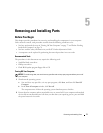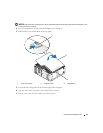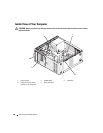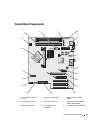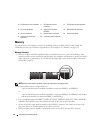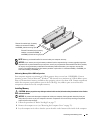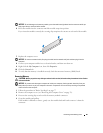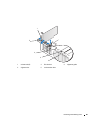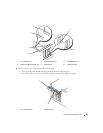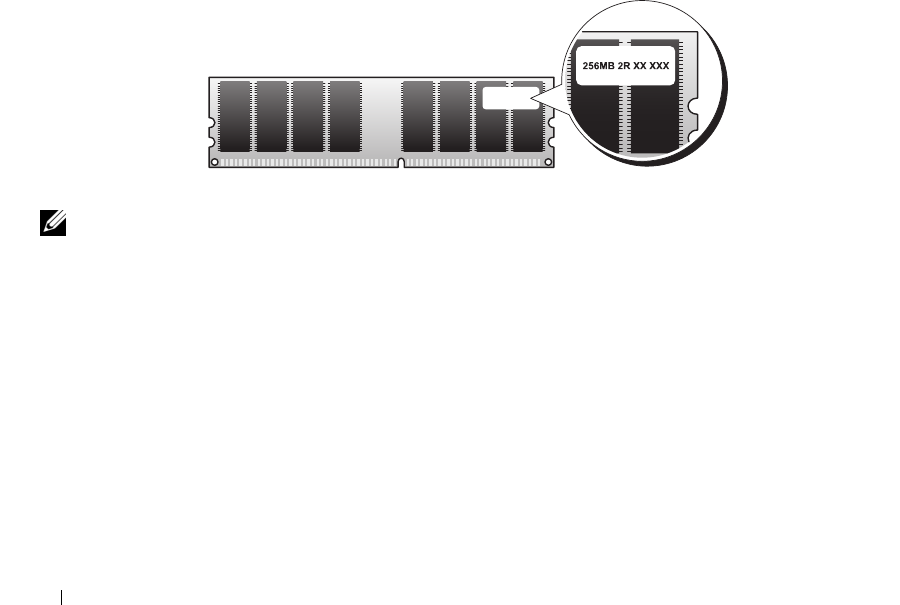
82 Removing and Installing Parts
Memory
You can increase your computer memory by installing memory modules on the system board. For
information on the type of memory supported by your computer, see "Memory" on page 121.
Memory Overview
• Memory modules should be installed in
pairs of matched memory size, speed, and technology
. If the
memory modules are not installed in matched pairs, the computer will continue to operate, but with a
slight reduction in performance. See the label in the upper-right corner of the module to determine
the module’s capacity.
NOTE: Always install memory modules in the order indicated on the system board.
The recommended memory configurations are:
– A pair of matched memory modules installed in connectors DIMM_1 and DIMM_2
or
– A pair of matched memory modules installed in connectors DIMM_1 and DIMM_2 and another
matched pair installed in connectors DIMM_3 and DIMM_4
• If you install mixed pairs of DDR2 533-MHz (PC2-4300), DDR2 667-MHz (PC2-5300), and DDR2
800-MHz (PC2-6400) memory, the modules function at the slowest speed installed.
• Be sure to install a single memory module in the DIMM_1 connector, the connector closest to the
processor, before you install modules in the other connectors.
• While installing memory modules, ensure that you do not mix ECC and non-ECC memory.
10 PCI Express x1 card connector 11 PCI Express x16 card
connector
12 PCI Express x4 card connector
13 PCI card connectors 14 floppy drive connector
(FLOPPY)
15 PS/2 and Serial connector
16 rear fan connector 17 thermal sensor connector 18 CPU fan connector
19 processor and heat sink
connector
20 processor power connector






